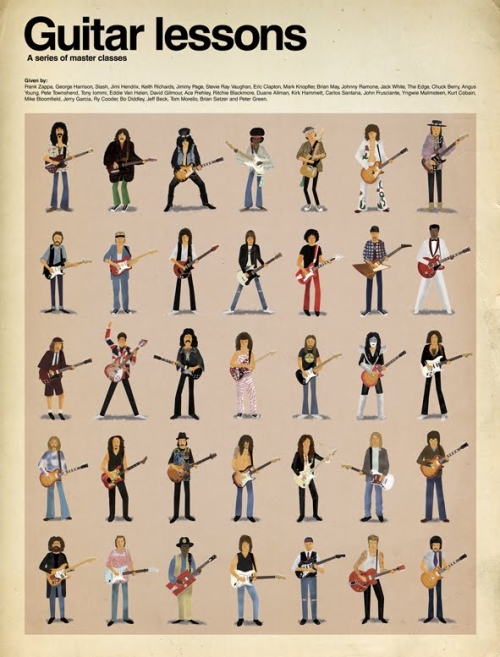
ToP 50 GuiTaRiSTs oF aLL TiMe
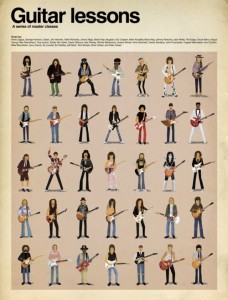 Gibson, sur son formidable blog (*) a publié, il y a peu, enfin y a pas si longtemps que ça, un Top 50 (ça nous rajeunit pas) des meilleurs guitaristes “de tous les temps”. Oui, juste de “tous les temps”. Rien que ça !
Gibson, sur son formidable blog (*) a publié, il y a peu, enfin y a pas si longtemps que ça, un Top 50 (ça nous rajeunit pas) des meilleurs guitaristes “de tous les temps”. Oui, juste de “tous les temps”. Rien que ça !
Le classement le voici. Publié avec l’aimable autorisation de Gibson. Donc, avec tous les commentaires d’origine. Encore une fois bikèrefoul, car c’est en américain d’Amérique, mais il n’y a rien de vraiment impressionnant, donc pas de quoi être impressionné, et, avec un peu d’intuition, c’est totalement intelligible. Akeu même BeeB HôPô i’ comprend presque tout. Alors…
Mais bon, de toute manière, j’ai scindé cette note en deux parties. La première, assez longuette j’en conviens mais c’est pas moi qu’a commencé, avec tous les heureux élus. Et donc réservée au classement proprement dit. Gibson l’a publié en 5 parties, le hic, c’est que les visiteurs ne lisaient que la dernière avec le le Top Ten des meilleurs gratteux du monde. La deuxième note, c’est mes commentaires, car j’aime bien dire ce que je pense, mais juste de temps en temps. Or là, justement, il est temps.
Comme je suis d’un naturel très sympa, sur cette première note, je me suis échiné à mettre des vignettes, que lorsqu’on clique dessus, ben c’est tout beau parce qu’elles s’agrandissent. Et c’est beau. Mais c’est encore plus beau quand on clique sur les agrandissements vers la droite. Étant donné que ça en jette pas qu’un peu, toutes les notes (ou presque) seront publiées avec ce widget et les anciennes mises à jour progressivement. Puisque j’vous l’dis ….
Ouèche !
Professor BeeB HôPô
49. (tie) Ritchie Blackmore (Deep Purple, Rainbow)
One of rock’s great riff-masters, Blackmore has always danced to a different muse. Pulling largely from medieval and classical influences while his competitors drew almost exclusively from blues, Blackmore created a musical vocabulary that influenced generations of shredders. In 1968, he co-founded one of the great hard-rock bands, Deep Purple. When he grew displeased with Purple’s post-Ian Gillan direction, he started his own supergroup, Rainbow. Cycling through members at a dizzying pace, Rainbow still managed to record some of the great albums of the period, most notably Rainbow Rising. In recent years, Blackmore has settled into a second career as the Minstrel in Black in Blackmore’s Night. – Michael Wright
49. (tie) Kurt Cobain (Nirvana)
The Nirvana frontman recoiled against technical proficiency but there’s a good reason why people are still trying to emulate the dirty, pummeling riffs of “Smells Like Teen Spirit” nearly two decades after Cobain first played them. Even though he was a left-handed guitarist who, even after success came fast and hard, adamantly stuck with the junk shop models that would barely stay in tune when he played, Cobain had a totally unique ability to harness power. “I’m the first to admit that I’m no virtuoso,” he once said. “I can’t play like Segovia. The flip side of that is that Segovia could probably never have played like me.” –– Aidin Vaziri –
47. (tie) Robert Fripp (King Crimson)
With a Gibson Les Paul “Black Beauty” under his arm, this Dorset, England, native burned his name into the history of art rock as the leader of King Crimson in 1969 and then pioneered ambient music with Brian Eno. At age 64 he continues to lead the prog pack with his “New Standard Tuning”, textural mastery and exploration of effects, as well as a super-ergonomic approach to the fingerboard that gives him hair-raising speed and dynamic control. Fripp is an unmitigated monster. – Ted Drozdowski
47. (tie) Andrés Segovia
Andrés Segovia, El Maestro, the self-taught peerless master of the Spanish classical guitar, singlehandedly made the guitar respectable. Pre-Segovia it was a seedy bar instrument. Post-Segovia it’s a revered staple of the concert hall circuit. The Spaniard arrived in America for the first time in 1928 and audiences were amazed at his interpretation, his virtuosity and musicianship. – Andrew Vaughan
42. (tie) Hubert Sumlin (Howlin’ Wolf, Muddy Waters)
One of the most revered Les Paul wranglers in electric blues, this shy 78-year-old invented some of the genre’s greatest riffs under the wing of his mentor Howlin’ Wolf. “Killing Floor”, “Spoonful”, “Smokestack Lightnin”‘,” and other classics put the whammy on Eric Clapton, Jimi Hendrix, Keith Richards, Jeff Beck, Jimmy Page and other blues-rock giants thanks to Sumlin’s voodoo-rific vocabulary of abrupt bends, zippy slides and oddball finger vibrato. And he still tours! – Ted Drozdowski
42. (tie) Clarence White (The Kentucky Colonels, The Byrds)
A flatpicking and electric giant in equal parts, Clarence White died tragically young, hit by a drunk driver in 1973. Like Charlie Christian, Wes Montgomery, Robert Johnson, Eddie Lang, Duane Allman and Jimi Hendrix, White died long before his full impact on the guitar could ever be measured. Starting out in bluegrass, there’s not a flatpicker who doesn’t cite him as a major influence. As a country-rock electric pioneer with The Byrds and others, he wrote the book – and, of course, gave us the B Bender, giving the six-string guitar a pedal steel sound. – Andrew Vaughan
42. (tie) Rory Gallagher (Taste, solo)
The late Irish guitarist may not be a household name, but his incredible ability to master the American blues put him in the company of all the greats, from Muddy Waters and Jerry Lee Lewis to Jeff Beck and Jimmy Page. Through his band Taste and his rich body of solo work, Gallagher set himself apart as one of the most dynamic blues-rock players in the ’70s and early ’80s. “Basically, I try to treat the electric guitar like an acoustic guitar,” he said. “What you have to do is attack the instrument and know that your feelings aren’t controlled by the controls of your guitar.” – Aidin Vaziri
42. (tie) John Frusciante (Red Hot Chili Peppers)
He was just 18 when he was drafted to replace his personal idol Hillel Slovak, who died of a drug overdose, in the Red Hot Chili Peppers. But Frusciante didn’t come onboard just to recreate the stuttering punk-funk riffs of the past. He brought melody and depth to the band’s defining multi-platinum releases, 1989’s Mother’s Milk and 1991’s Blood Sugar Sex Magik. And each time he circled back to the group between his various solo flights, the results were always inspirational. As singer Anthony Kiedis once said, “John is always deeply disciplined and committed to living and breathing his music at all hours of the day and night. That’s pretty infectious.” – Aidin Vaziri
42. (tie) Richard Thompson
The British folk legend has been lauded critically and received numerous industry awards but remains a commercial mystery. One of the great guitar stylists, Thompson easily sits at the English head table alongside Eric Clapton, Jeff Beck and Jimmy Page. Where those players took blues as their point of departure, Thompson opted to work within and expand the folk music realm. Throw in the added bonus that he’s also a gifted and much-recorded songwriter (Bonnie Raitt, R.E.M., Dave Gilmour and Elvis Costello are all satisfied customers), his career longevity, and steadfast refusal to sell-out, and Thompson can breathe the rarified air of writer/guitarists like Neil Young and Prince. ¬ Andrew Vaughan
41. David Gilmour (Pink Floyd)
Sure, Pink Floyd began as a psychedelic rock band, but there are few riffers with a purer approach to blues than Gilmour, whose stunning Gold Top essay in “Comfortably Numb” is one of the greatest solos of the modern era. But when put in the context of his 42 years with Floyd, plus excursions with Kate Bush, Eric Clapton, Pete Townshend and others, it’s just a brief flight in an epic, lifelong guitar odyssey of unlimited imagination, depth and scope. – Ted Drozdowski
40. Steve Jones (Sex Pistols)
Steve Jones exploded on the scene in the mid-’70s – a one-man Les Paul blitzkrieg. His staggering work on Never Mind the Bollocks – the Sex Pistols’ only album – alone puts Jones in the elite class. His love of ’70s power pop and old-time rock and roll, combined with the in-your-face anger engendered by Johnny Rotten, resulted in furious chord runs, biting Chuck Berry steals and an overall sound that was as frightening as it was inspired. Post-punk, Jones turned into one of L.A.’s most in-demand guns for hire – playing with a slew of acts, notably Iggy Pop and Bob Dylan, and making two solo albums in the late ’80s. – Andrew Vaughan
39. Frank Zappa
You might not have expected the man who titled his songs “But Who Was Fulcanelli?” and “Theme from the 3rd Movement of Sinister Footwear” to take his job all that seriously. But with Zappa, the absurdity was just a front for his unflinching dedication to his craft. He didn’t swing wildly from nagging doo-wop melodies to improvisational freakouts to be funny, but because he could. Go back, listen to his willful solos or anything he did with Mothers of Invention, and discover how bound and determined he was to make music matter. – Aidin Vaziri
38. Lou Reed (Velvet Underground)
Though it would be a stretch to call Lou Reed a six-string virtuoso, few guitarists have proven as adept at capturing the essence of rock and roll. With the Velvet Underground, Reed employed imaginative tunings, controlled feedback, and white-hot harmonics to put a wallop in the band’s most adventurous songs. His solo albums – especially The Blue Mask and New York – are marked by his dazzling rhythm work and careful attention to tone. – Russell Hall
36. (tie) Mike Campbell (Tom Petty and the Heartbreakers)
I don’t think Tom Petty would argue with this: The band should be called Tom Petty and Mike Campbell and the Heartbreakers. As a co-writer, a co-producer and a phenomenally melodic guitarist, Campbell has as big a claim on that band as anyone. Never showy, every note he plays is in service of the song, whether Campbell is gassing up “Honeybee” in the garage or keeping “Free Fallin'” lighter than air. His versatility is further evidenced by his session work, in which he’s played with the Dixie Chicks, Bad Religion, D’Angelo and Bob Dylan. – Bryan Wawzenek
36. (tie) Charlie Christian
Modern electric lead guitar starts with this Texas native’s ’30s and ’40s recordings, which elevated the instrument from a jazz time-keeper to a formidable voice equal to that of horn players like Lester Young. Christian, who was only 25 when he died in 1942, used his Gibson ES-150 to develop a style of single-note soloing based on sax lines that cut through the dense layers of the era’s big bands to cast a spell on Les Paul, T-Bone Walker and other innovators. – Ted Drozdowski
35. Buddy Guy
It’s hard to find a Chicago blues player with more originality and expression in his playing. Guy is a true innovator with his double-stops style, and an all-time great bender. He’s got great rhythm chops, and has been a huge influence on many top players, most notably and directly, Stevie Ray Vaughan. Buddy was perhaps the main “second generation” Chicago blues artist who took the guitar to the forefront of the mid-tolate ’60s blues boom. – Arlen Roth
34. Slash (Guns N’ Roses, Velvet Revolver)
More than 20 years after Guns N’ Roses first b*tchslapped the sugary Sunset Strip metal scene of the mid-to-late ’80s, history now holds Slash as the single most influential guitarist to emerge from that highly competitive guitar-hero era. Slash not only played circles around the legion of pretty-boy wannabes wearing their mama’s makeup, but his virtuosity was raw, honest and dangerous – elements all but void from the rouge-tinted din flailing to hitch a ride on the Chapeaued Shredder’s immense coattails. And he’s only getting better! – Sean Dooley
33. Scotty Moore (Elvis Presley)
One of the most influential guitarists in history, Scotty Moore backed Elvis Presley through the ’50s and early ’60s, playing on such seminal rock and roll tunes as “That’s All Right”, “Hound Dog”, “Heartbreak Hotel” and “Jailhouse Rock”. Destiny undoubtedly tapped Sam Phillips on the shoulder when he matched Moore and double bassist Bill Black with a teenaged truck driver poised to conquer the world. The schoolboys who would grow up to become The Beatles, The Rolling Stones, Led Zeppelin and a myriad of other acts were listening and taking notes. – Michael Wright
32. Ry Cooder
The slide guitar master, composer and producer is universally acclaimed in musical circles as one of the greats, not just for his playing but his eclectic musical knowledge. A prodigious young slide player, he almost joined The Rolling Stones after Brian Jones’ death, taught Keef all he could learn about open tunings and brought guitar finesse to the Stones’ “Sticky Fingers” and “Let It Bleed”. As a composer, he’s responsible for some of the finest soundtrack work in American cinema with his “Paris, Texas” score for Wim Wenders. – Andrew Vaughan
31. Bo Diddley
Psychedelia begins with big, bad Bo. His one-chord hypno-jams “Who Do You Love?” and “Hey Bo Diddley” for Chess Records made the Afro-Caribbean “Bo Diddley beat” a household term. Using his guitar like a drum, Mississippian Elias McDaniel wedded the clave rhythm and the street corner hambone to invent a fundamental element of rock and roll. Little Richard and Jerry Lee Lewis made rock’s persona dangerous, but, thanks to his dirty tone and raw energy, Bo did that for the music’s sound. – Ted Drozdowski
30. Roy Buchanan
This Arkansas native was a blend of transcendent technician and hillbilly. Buchanan’s interest in steel guitar led him to develop a singular vocabulary of sleight-of-hand volume effects, radical string-bending, artificial harmonics and other tics that he wove into one of the most soulful and dynamic guitar tones ever developed. Declining an invitation to join the Rolling Stones, Buchanan crafted a deep legacy of American roots music – cut short by his death in 1988 at age 48. – Ted Drozdowski
29. Duane Allman (The Allman Brothers, Derek and the Dominos)
Though he died young – in a motorcycle accident at the age of 24 – Duane Allman made terrific use of the time he did have on earth, co-founding The Allman Brothers Band and establishing himself as a preeminent session guitarist. Known for his searing slide work on a Les Paul, Allman also was famously recruited by Eric Clapton to contribute to Derek and the Dominos’ top-notch “Layla and Other Assorted Love Songs”. – Ellen Barnes
28. Ed O’Brien and Jonny Greenwood (Radiohead)
Radiohead’s dynamic duo were the only guitarists to receive votes as a pair in this poll, let alone the only two-member entry on this list. That fact speaks to the inseparable nature of these two musicians, known as much for their abusive guitar playing as they are for ambient approaches to Radiohead’s ethereal material. With a mile of effects pedals at their feet, Greenwood and O’Brien are as versatile as any duo in rock, with the ability to crunch out “Just” (and its rush of chords) or twinkle their way through “Street Spirit (Fade Out)” – Bryan Wawzenek
27. Danny Gatton
Gatton is one of the most eclectic and far-reaching guitarists who ever lived – an innovator in rockabilly, country and jazz. There was nothing my dear friend couldn’t master. He played “Tequila” with me on my Toolin’ Around album and performed on Late Night with Conan O’Brien with me. Also, he made two Hot Licks videos for me, and was the nicest guy in the world. Fantastic ideas all the time, and a guitar style that was full of personality and humor! – Arlen Roth
26. Neil Young
Another one of those players who isn’t that technically proficient but still manages to make the heart thump by channeling every one of his emotions into a massive guitar blowout. His best songs – epics like “Cortez The Killer” and “Cnnamon Girl” – all lead to that moment when you know it’s all going to spill over in one of those fuzzy, galvanizing one-note solos that has served as a blueprint for countless indie rockers over the years. When Guitar Player magazine asked him what he looks for in those instances, Young said, “You can feel it. That’s all I’m looking for. You can tell I don’t care about bad notes.” – Aidin Vaziri
25. Angus Young (AC/DC)
What a warhorse. The AC/DC guitarist is responsible for some of rock and roll’s most familiar riffs from the past four decades – from “Back in Black” to “You Shook Me All Night Long”. It’s impossible to pick a favorite, but rest assured every one of his blues-drenched chords is guaranteed to make people jump on tables and swing from chandeliers. And the fact that he’s done it all in an English schoolboy uniform makes it all that much sweeter. “From the beginning we always wanted to make good rock and roll,” Young once said. “We’ve stuck to that all the way through. The challenge is still coming up with rock and roll nobody has heard before, but they can still put it on and say that’s AC/DC” – Aidin Vaziri
24. Ron Asheton (The Stooges)
Would punk rock have ever materialized without Ron Asheton ? His caveman riffs and hallucinogenic roaring predated punk by nearly a decade, giving his followers a wall of mud to grab from. The Stooges, and Asheton in particular, reduced rock and roll to its primal elements long before sex found a pistol or anyone changed their surname to Ramone – heck, Asheton basically played variations of the same riff throughout The Stooges’ 1969 debut album. It was so dumb, it was genius. And when The Stooges reformed in the 2000s, Asheton proved he was just as brutally brilliant as he was decades ago. – Bryan Wawzenek
23. The Edge (U2)
U2’s guitarist has created a sound that is distinctly his own – no small feat when you consider he’s had to do it in the course of three decades while working shoulder-to-shoulder with one of the biggest personalities in rock, Bono. The Edge responded not by playing louder or flashier, but creating a dynamic mood using heavy reverb and delay. Despite his minimalist style, his songs have easily managed to fill stadiums and radio playlists. “I’m a musician,” he says. “I’m not a gunslinger. That’s the difference between what I do and what a lot of guitar heroes do.” – Aidin Vaziri
22. Les Paul
The architect and grandfather of rock and roll, Lester William Polfuss (a.k.a. Les Paul) was a unique figure in the history of 20th Century music. As an inventor, he revolutionized the way we record music and the way we play it, pioneering such developments as the solid-body electric guitar. Beyond that, he was an almost terrifyingly brilliant player, whose speed and phrasing influenced the likes of Jeff Beck, Duane Eddy and Charlie Byrd. – Michael Wright
21. Johnny Marr (The Smiths)
An innovative post-punk guitarist, Marr has had a long career as guitar guru to a host of artists and delivered superbly on his own’diverse projects. But it’s his groundbreaking work with one of the most significant bands of the ’80s, The Smiths, which marks him out as a great. Using open tunings and even pushing his guitar up a step to accommodate singer Morrissey’s vocal nuances, he applied a sweeping, ’80s twist to the jangly Byrds/Neil Young sound he loved so much, and in doing so inspired a generation of chiming guitarists. – Andrew Vaughan
20. Django Reinhardt
Pioneer of the gypsy jazz genre, Reinhardt mesmerized 1930s Parisian audiences – and later distracted them from World War II – with his percussive, swinging approach to the guitar. His intricate playing style was born out of adversity; at age 18, a house fire left him badly burned and his third and fourth fingers partially paralyzed. Consequently, Reinhardt played all his solos with only two fingers. An inspiration to many contemporary guitarists, Reinhardt continues to prove to modern listeners that jazz guitar is anything but stuffy. – Ellen Barnes

19. Mick Ronson (David Bowie, Ian Hunter)
One of rock’s most versatile sidemen, Mick Ronson was the six-string engine behind seminal albums by Lou Reed, Ian Hunter, and, of course, David Bowie. Whether a song called for stately elegance (Bowie’s “Life on Mars?”) or searing three-chord bluster (“Reed’s “Vicious”), Ronson always had the goods. His celestial outro on Bowie’s “Moonage Daydream” remains one of rock’s most breathtaking moments. Fittingly, Hunter called Ronson a musical Picasso. – Russell Hall
18. Wes Montgomery
This thumb-picking master of the Gibson L-5CES from Indianapolis changed the sound of jazz guitar melody from bebop’s single-note lines to elegant gliding octave and block chords that rang like gentle, breathy sighs even during his most ferocious playing. His influence continues to resonate in inheritors like George Benson and Pat Martino, but extended well beyond straight jazz to fusion explorers like John McLaughlin and Montgomery’s trumpet-playing contemporary Miles Davis. – Ted Drozdowski
17. B.B. King
He’s become an institution and beacon for every guitarist who was raised on the blues – including Keith Richards, Jimmy Page and his sometime-collaborator Eric Clapton. Even as an octogenarian, King is still out there doing it, bending his strings, driving hard on those electric solos that inspired an entire generation of rockers and dragging his beloved Lucille from theater to theater filled with awestruck audiences. He could have cashed in on his rich legacy a long time ago, but King is doing it for a very simple reason. “I love to play”” he says. – Aidin Vaziri
16. Mike Bloomfield (Paul Butterfield Blues Band, Bob Dylan)
Bloomfield was a very powerful and influential player who possessed incredible fire and intelligence in his playing. His work with The Paul Butterfield Blues Band and then with Bob Dylan really helped shape the lead blues guitar movement of the ’60s. He continued with The Electric Flag and Super Session, and his move from the Telecaster to the vintage Les Paul sunburst literally made everyone “ave to have”one back then. One of the all-time greats, Michael possessed some of the greatest bending, vibrato and phrasing ever. – Arlen Roth
15. Steve Cropper (Booker T. & The MGs)
As the six-string voice of Memphis’ Stax Records, Cropper is a man of a thousand riffs. His spanking, sliding, rhythm-based style put the sting in Wilson Pickett’s “In the Midnight Hour,” Eddie Floyd’s “Knock on Wood,” Sam & Dave’s ““Soul Man” all of Otis Redding’s hits and a host of other tunes that defined rhythm & blues for the ’60s and ’70s. Today Cropper’s sinuous and sinewy licks remain deeply embedded in the American soul and subconscious. – Ted Drozdowski
14. Prince
Often overlooked as one of the all-time great guitarists, Prince is a tremendous player with a chameleon-like ability to color any song with dazzling fretwork and a prodigious fusion of funk, blues, R&B, jazz and rock. Prince can shred like a metal god in one moment, then stand shoulder to shoulder with the Jimmy Nolens and Steve Croppers of the world in his ability to lay down a tasty R&B groove. The Artist’s true genius on guitar is his ability to coax real emotion out of the instrument, thereby elevating good songs into masterpieces. – Sean Dooley
13. Jack White (The White Stripes, The Raconteurs)
White is a junk collector, taking shiny bits of things nobody wants anymore and making them into something everyone has to have. Blending technical prowess with old-timey aesthetics, bleeding together influences such as Charlie Patton and The Stooges, White unleashes scorching runs that should melt his plastic guitar. He’s equally outstanding as a songwriter, providing an unbeatable framework for his tortured solos. Whether he’s playing alongside the clompety-clomp of “big sister” Meg in The White Stripes or jamming with his buddies in The Raconteurs, this junk collector is the guitar hero for the 21st century. – Bryan Wawzenek
12. Stevie Ray Vaughan
If you ever had the chance to witness Stevie Ray Vaughan perform, you, too, understand that he didn’t just “play” the guitar – he channeled music from the depths of his soul and through his body and guitar, which were connected as one. Mesmerizing to the point of hypnotic, watching the music burst out of him with such beautiful yet brutal violence and magnitude was to behold some form of musical and spiritual possession. Stevie Ray Vaughan’s legacy permanently resides in the rarified pantheon reserved for bona fide guitar gods. – Sean Dooley
11. George Harrison (The Beatles)
If judged solely by the number of people who picked up a guitar for the first time because of his music, George Harrison is the most influential guitarist of all time. Deftly mixing rockabilly, blues and country, Harrison was the perfect guitarist for the omnivorous songcrafting of The Beatles. His incorporation of sitar into the band’s sound practically changed the way people thought about the sonic possibilities of pop music. In addition to all this, he played the sweetest sounding slide anywhere. – Michael Wright
10. Pete Townshend (The Who)
The guitar, as an instrument, has never sounded as angry as when played by Pete Townshend. Listen to “Young Man Blues” on “Live at Leeds” or “The Real Me” on “Quadrophenia”, and you will hear the sound of a man on the edge, abusing his instrument as the only means of expressing his repressed rage. Punk was born from this. Heavy metal. Hard rock, in all its various forms, can be traced back to the London kid with the big nose windmilling like his life depended on it. The genius of Townshend, though, is that this is just one facet of his playing. I dare you to find a more sincere, emotional solo than the one Pete takes in “Love Reigns O’er Me”. Or hillbilly glee to match “Squeeze Box”. Too iconoclastic to conform to the Mods, too musical to be a true punk, Pete Townshend stands in a category all his own. – Michael Wright
9. Robert Johnson
No guitarist has had a greater impact on modern blues and rock guitar than Robert Johnson. Over the course of just 29 original songs, the “King of the Delta Blues” laid the groundwork for styles further shaped and developed by Jimmy Page, Eric Clapton, Duane Allman and countless others. A haunted figure, Johnson led a life shrouded in mystery, with some insisting only a pact with the Devil could account for the seemingly sudden burst of guitar skills that took hold in him in his early 20s. In truth, as those who knew him have said, Johnson worked diligently to perfect the craft that yielded such classics as “Love in Vain”, “Crossroad Blues” and “Sweet Home Chicago”. Keith Richards once described Johnson’s guitar playing as sounding “like Bach.” Clapton calls Johnson’s music “the most powerful cry that I think you can find in the human voice.” – Russell Hall
8. Chet Atkins
One of the founding members and architects of the Nashville Sound, Chet Atkins was unquestionably the greatest and most renowned guitarist country music has ever known. Over the years, Chet released hundreds of remarkable solo recordings displaying his undeniable talent, but it was his work as a session guitarist that may ultimately be the part of his legacy that shines the brightest. Mr. Guitar was one of the most prolific session players in history, and his stunning work can be heard on many of the biggest records of all time, including on countless classics by Elvis Presley, Hank Williams, the Everly Brothers and dozens upon dozens of A-list artists. Chet’s groundbreaking fusion of jazz and country-picking would go on to influence such legendary guitarists as George Harrison, Mark Knopfler, Glen Campbell, Jerry Reed, Duane Eddy and countless other big-time artists. Check out the DVD Chet Atkins: Certified Guitar Player to witness to Atkins’ undeniable greatness. – Sean Dooley
7. Eddie Van Halen (Van Halen)
For countless guitarists around the world, history can easily be divided into two distinct eras: pre-Van Halen and post-Van Halen. And it all started with an explosive instrumental track that clocked in at a brisk 1:42. The blistering pyrotechnics on display in “Eruption,” from the group’s debut album Van Halen, proved an epiphany for millions of aspiring – and accomplished – rock guitarists everywhere. That track alone signaled a seismic shift in the way the instrument would forever be played. Eddie’s performance on “Eruption” is nothing short of mesmerizing. No guitar had ever sounded like that – it was almost hard to believe that it was just one man, one instrument, one take and no overdubs. Eddie’s patented double-handed finger-tapping on the fretboard created an almost symphonic cacophony the likes of which had never been heard before, and rock music would never be the same. Simply put, Eddie Van Halen is easily the most influential (and poorly imitated) guitarist of the last 30 years. – Sean Dooley
6. Jeff Beck (The Yardbirds, The Jeff Beck Group)
Only the rarest of musicians are capable of celebrating a milestone like a 65th birthday by making one of the their best albums and, sure enough, Beck’s beautifully orchestrated 2010 release Emotion & Commotion recalls the passion and scope of his pivotal 1970s masterpieces, Blow By Blow and Wired. On those albums, with his 1954 Oxblood Les Paul and limitless imagination, Beck ducked his early history as part of the original Holy Trinity of British blues to prove his artistry has no boundaries. Even as a bluesman, Beck was unique. His post-Yardbirds playing with The Jeff Beck Group on their 1968 debut Truth has passages of noisy expressionism that would fit modern discs by Sonic Youth or Muse, despite his gargantuan strength as a melodist. Whether playing as a sideman, headlining small clubs like Ronnie Scott’s or flooring a horde of fellow six-string virtuosos and their fans at Eric Clapton’s Crossroads Festival, Beck is an absolute master — perhaps the absolute master — of modern electric guitar. – Ted Drozdowski
5. Chuck Berry
What’s the old cliché? Before Jimi went to the moon, Chuck built the rocket. Well, that’s why Berry is in the pantheon of great guitarists. His brilliant synthesis of blues and hillbilly guitar created the language of rock and roll. He set the template firmly in place, then duckwalked all over it. There’s no rock act that doesn’t owe a debt (direct or indirect) to Chuck Berry, but there’s more to be said for the St. Louis native than just his influence. His technique was sharp, his tone was stunning, and that woozy, back-and-forth bend on “Carol” says more than any super-shredding solo in history. On those early Chess Records sides, whether he was working in blues, country, rock, rhythm or jazz, Chuck demanded your attention in a way that every artist has tried to imitate, but none have fully replicated. He’ll always be one of the greats. Tell Tchaikovsky the news. – Bryan Wawzenek
4. Eric Clapton (Cream, Derek and the Dominos)
Forget about his far-reaching solo work for a minute. Forget Cream. Forget the Yardbirds. Forget Derek and the Dominos. Forget the beer commercial and “Tears in Heaven.” Forget everything. The main reason kids should still be spray painting “Clapton is God“ on city walls is because of that solo on The Beatles’ “While My Guitar Gently Weeps”. All that came after that was just gravy. The musician nicknamed Slowhand has always had a strong sense of melody and even his dense, improvisational solos never fade without offering substance. He has spent his career swinging between experimentation and tradition while collecting Grammys. He can play deep and soulful. He can play loud and searing. He has been a prolific champion of the blues, paying tribute to idols like B.B. King and Robert Johnson at every opportunity. And after all this time, his spot-on playing still manages to dazzle. – Aidin Vaziri
3. Keith Richards (The Rolling Stones)
The undisputed musical leader of The Rolling Stones, Richards is the best rhythm guitarist in history. He’s the rajah of the riff, the overlord of opening tuning and the sultan of “Satisfaction”. Taking cues from Chuck Berry, Muddy Waters and Jimmy Reed, Richards’ genius lies in simplifying a guitar phrase until it’s down to the absolute essentials. His riffs are unfettered. By using an economy of language, they remain unforgettable. Peter Frampton might have made his axe “talk,” but Keef had already been holding conversations with listeners for years. And what’s a better ice-breaker than the opening riff to “Brown Sugar” or “Start Me Up”? Richards also deserves credit for playing well with others. Working in the Stones with Brian Jones, Mick Taylor and Ronnie Wood, Richards has employed “the ancient art of weaving,” bringing together the lead and rhythm guitar parts via methods learned from his heroes. And when the Stones tour, Keef’s still up there working his butt off – forever in service of band and song. – Bryan Wawzenek
2. Jimmy Page (Led Zeppelin)
Rock’s sorcerer supreme, Jimmy Page took the blues, rockabilly and folk and fired it out of a cannon with the release of Led Zeppelin’s eponymous debut in 1969. Years of teeth-cutting in London studios and a short, but eventful, tenure in the Yardbirds only served to sharpen Page’s incomparable skills. Not content to rest on an already winning formula, Page took quantum leaps forward in songwriting, producing and playing on every Zeppelin album. After an initial period of silence following the band’s split, Page re-entered the rock scene as Guitar God Emeritus with The Firm, on solo albums and in collaborations with The Black Crowes, David Coverdale and his old partner in crime, Robert Plant. Page remains one of the most influential and revered guitarists of all time. For case in point, watch The Edge and Jack White, in the film It Might Get Loud, turn into fawning schoolboys when the master launches into the opening chords of “Whole Lotta Love.” – Michael Wright
1. Jimi Hendrix
Jimi Hendrix revolutionized guitar playing and rock music – building a rainbow bridge between blues, rock and roll and the psychedelic experiments of the mid-’60s. Never has a guitar player appeared so “at one” with his instrument – his live shows were more out-of-body experiences than performances. His tragically short recording career saw only three studio albums, “Are You Experienced?” (1967), “Axis: Bold as Love” (also 1967), and” Electric Ladyland “(1968). Hendrix’s performance at Woodstock remains a genuine iconic moment in rock and roll history. Jimi Hendrix was only 27 when he died in a London flat. Neil Young said it best when he inducted Jimi into the Rock and Roll Hall of Fame, “Hendrix threw a Molotov cocktail onto rock and roll”. – Andrew Vaughan
Le blog de Gibson est définitivement fermé. Le site : Gibson USA
![]()





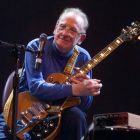
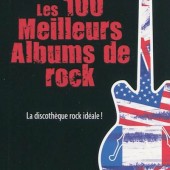
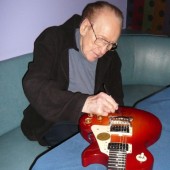
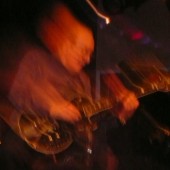
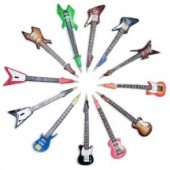

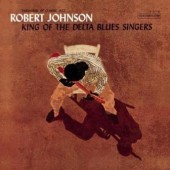
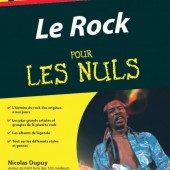

Soyez le premier à commenter